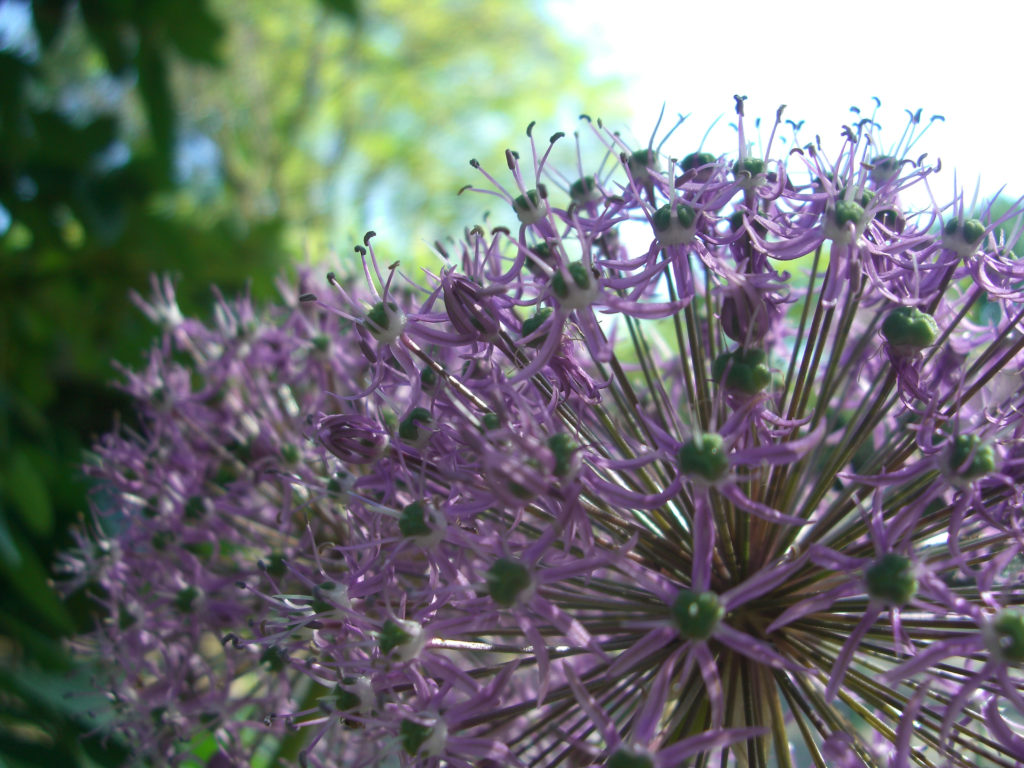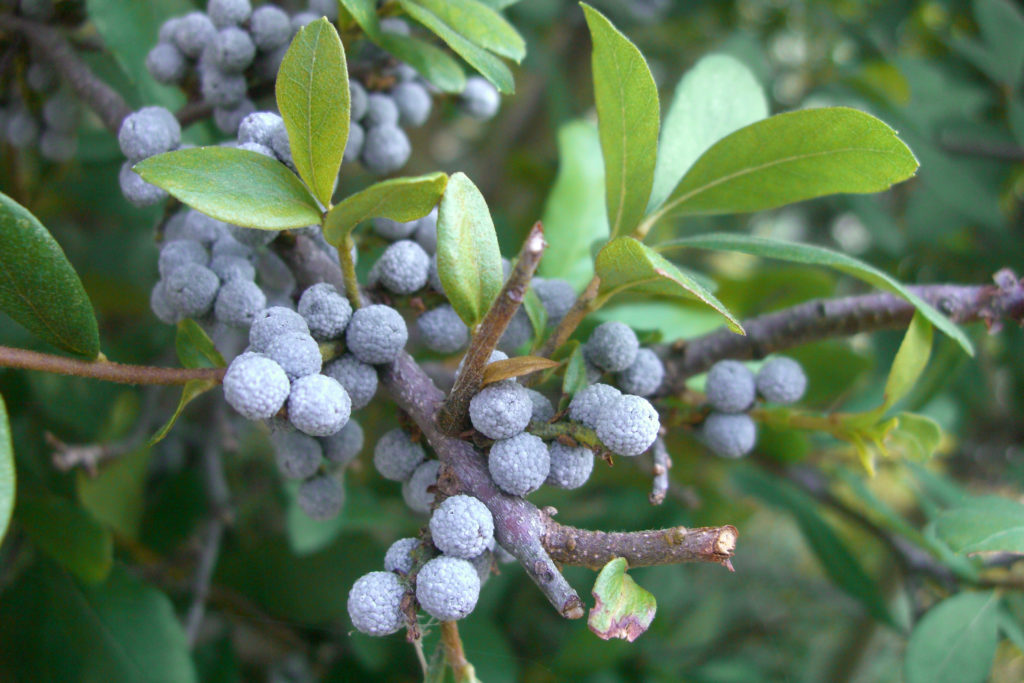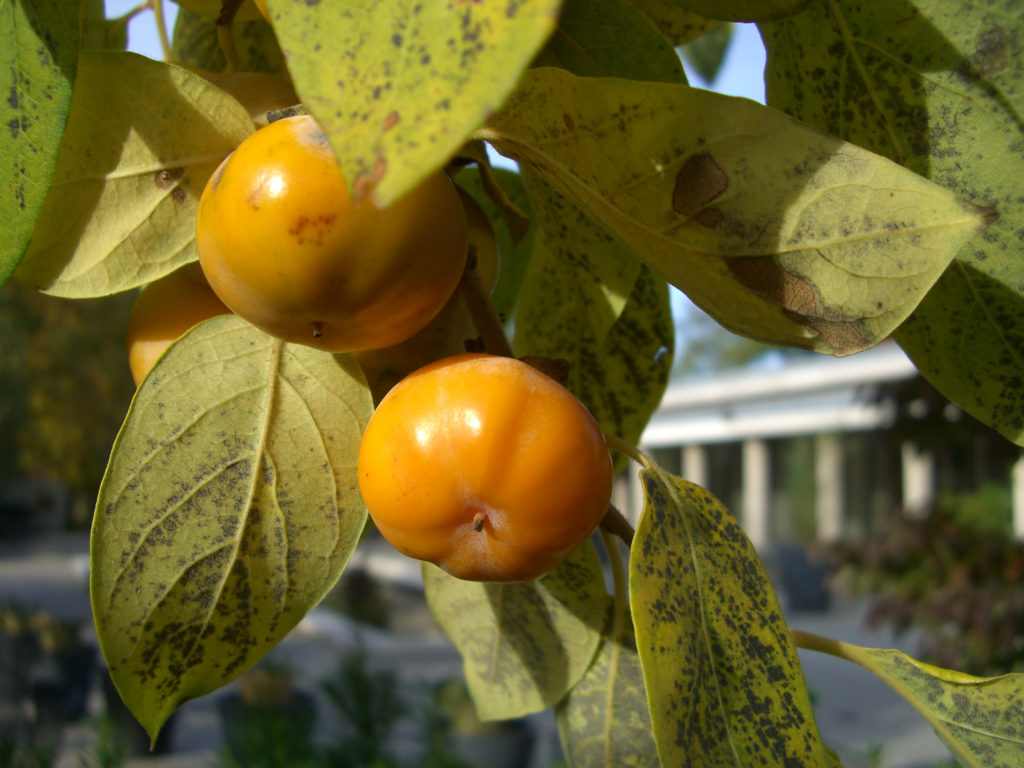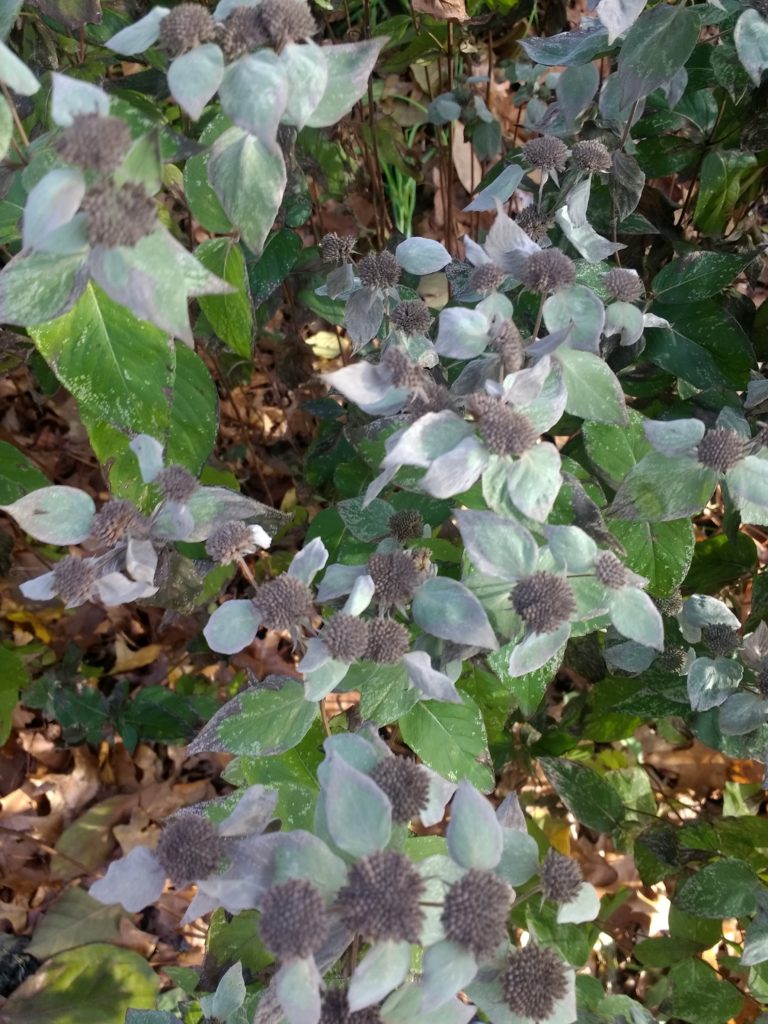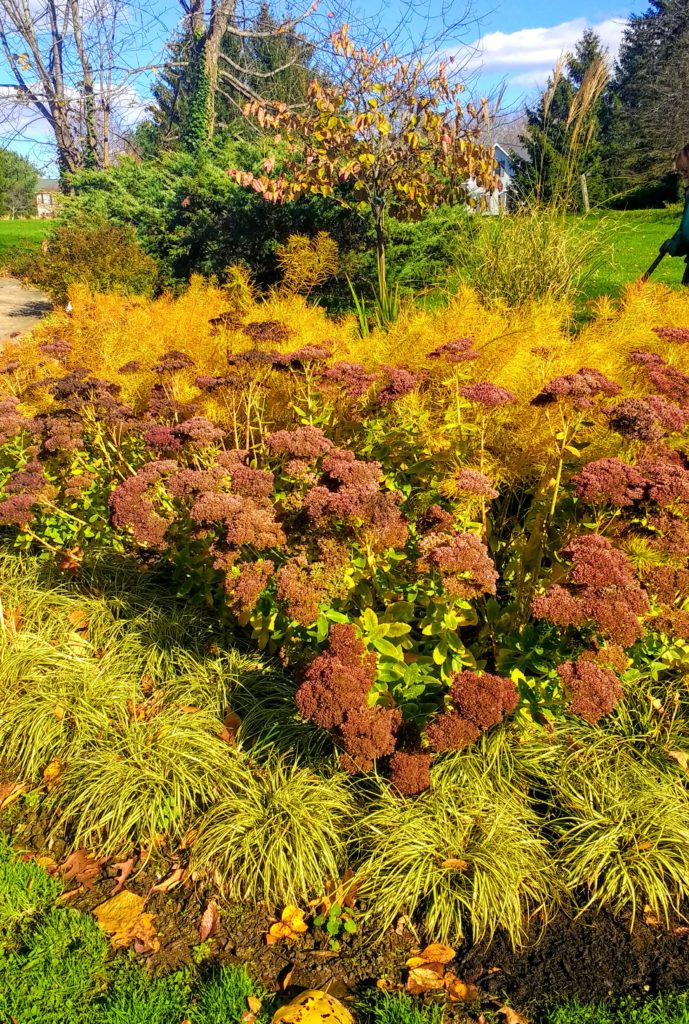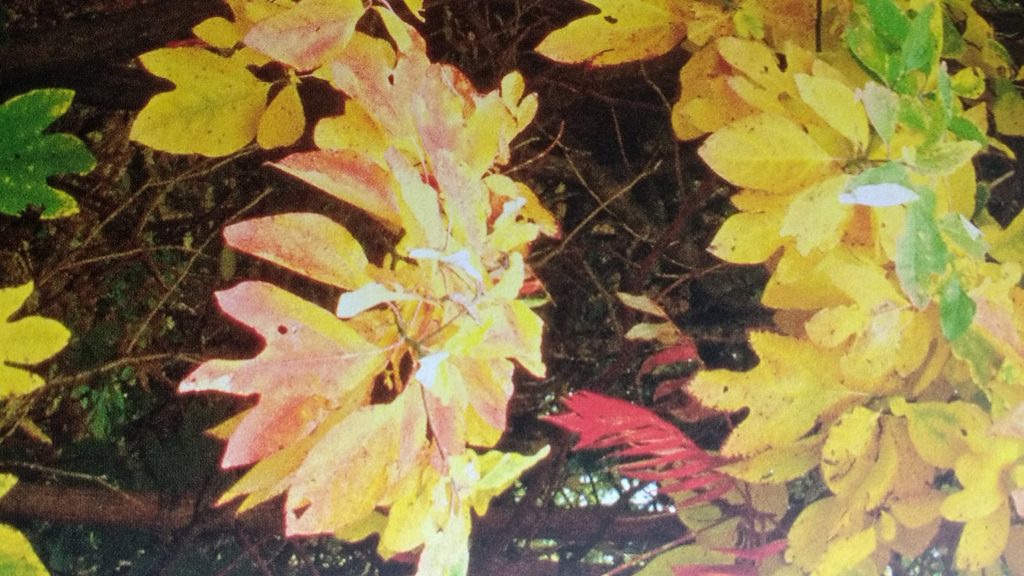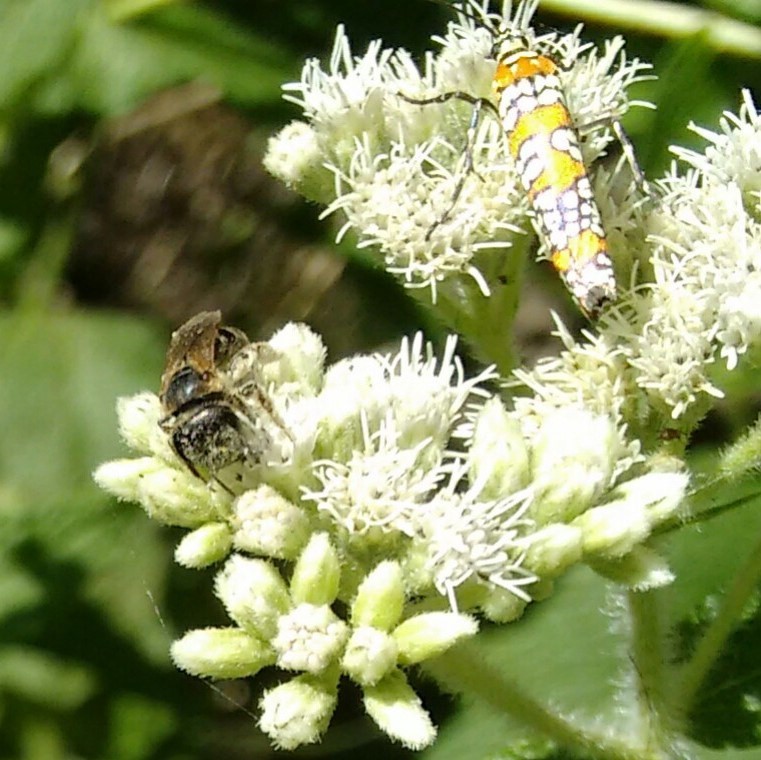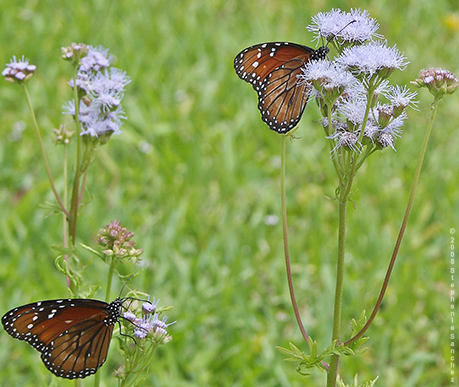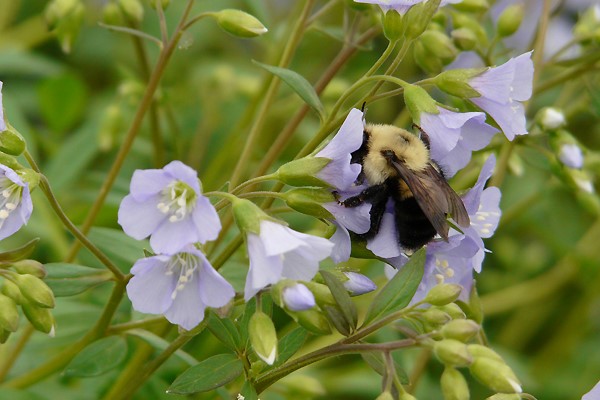This Thanksgiving, we thought we’d share some of the garden plants we’re most thankful for.
Ann McCulloh:
Seems like I’ll be planting bulbs until the ground freezes solid, and some of my very favorite bulbs are the Alliums. There are many varieties of this charismatic onion relative, which bloom at various times in spring, summer or fall. All the tiny florets provide wonderful nectar for bees and butterflies. Best of all, the deer don’t like ’em!
The appeal of Eastern Bayberry (Morella pensylvanica) for me is the wonderful fragrance of the leaves and berries. Since this salt tolerant, semi-evergreen shrub makes a beautiful hedge when pruned regularly, there’s plenty of opportunity to enjoy the scent when trimming it. Lots of birds eat the berries, too!
I welcome frost this time of year, once the houseplants are safe inside – it means a break from laboring in the garden! Another benefit is the softening, sweetening effect it has on the fruits of the native persimmon, Diospyros americana. The variety ‘Meader’ is hardy, self-pollinating and can be easily kept at 12′ tall. Beautiful orange fall color, too.
Catherine Feldman:
Pyncnantheum… native mint. Grows in part shade. Fresh pepperminty smell. Extremely attractive to pollinators midsummer through fall. Spreads by runners. Lovely blue grey foliage — color seems to deepen as the season passes.
Elsa Johnson:
A pleasing combination in fall is Amsonia hubrichtii, Sedum spectablis, and carex.
Amsonia hubrichtii… the amsonias are big clump forming perennials, though not at first, so patience is needed for the first couple years, especially in semi shade. All amsonias have pale, pale blue flowers in spring. Hubrichtii has fine thread-like leaves that turn a deep gold in the fall and is an aesthetic wonder, adding both color and billowing soft texture.
Sedum spectablis…a common garden perennial that is also a great pollinator attractor. The blossoms darken to shades of rosy russet in the fall and really stand out against a background of amsonia hubrichtii.
Carex… this is a cultivar I found ….it reminds me of hair. I find that if carex looks too much like ordinary grass my non-gardener clients think they are grass and weed them out. A non grass color like variegation seems to help.
Nyssa sylvatica… one of my favorite trees. Common name Black Gum . This is an easy to grow tree that is adaptable to many environmental conditions once established, and resistant to many diseases and pests. Has shiny dark green leaves that turn to crimson in the early fall. Deer like to browse the young leaves, so protection is needed while the tree is young.
Sassafras… Tends to grow in a thicket. In a good year the leaves turn marvelous mixed shades of yellow and gold flushed with coral.
Tom Gibson:
My favorite pollinator attractor? Without question it’s boneset, eupatorium perfoliatum, which not only attracts the usual cast of honey bees and bumblebees, but all kinds of wasps, beetles and flies that often rely on pollen for just part of their diet. I’ve already written about boneset, but the annual early August show continues to pull me in. I will stand for 15 minutes at a time just to watch the ecstatic, oblivious activity of the dozens of insect visitors. Here’s an ailanthus web worm with a mason bee:
Another favorite is the hardy ageratum (Conoclinium coelestinum). It’s not mentioned nearly as much as milkweed as a food source for monarchs, but the butterflies always make a stop on these light blue flowers on their way south during the fall.
Finally, there’s Jacob’s ladder. It’s one of the first plants to bloom in the spring and is a great source of early nourishment for queen bumblebees, whose self-heated “blood” enables them to begin establishing nests in cool weather.
Jacob’s ladder grows prolifically in my shade garden. It happens to bloom at the same time as my red and black currant bushes, so Jacob’s ladders provide a nice assist in getting fruit started.
